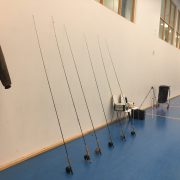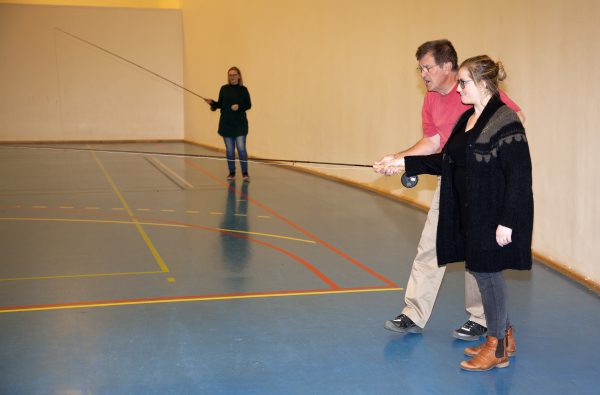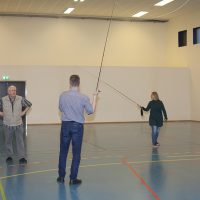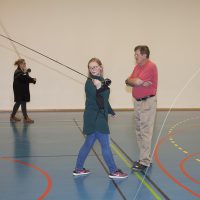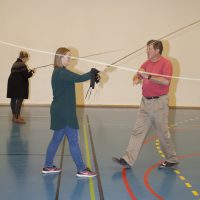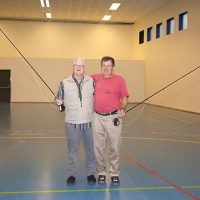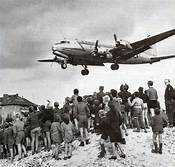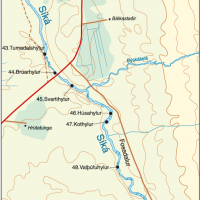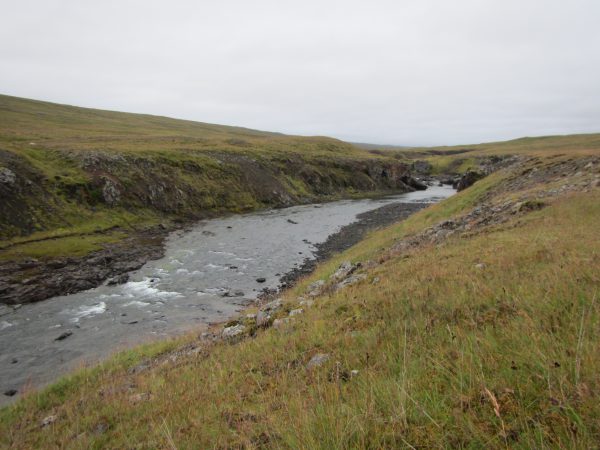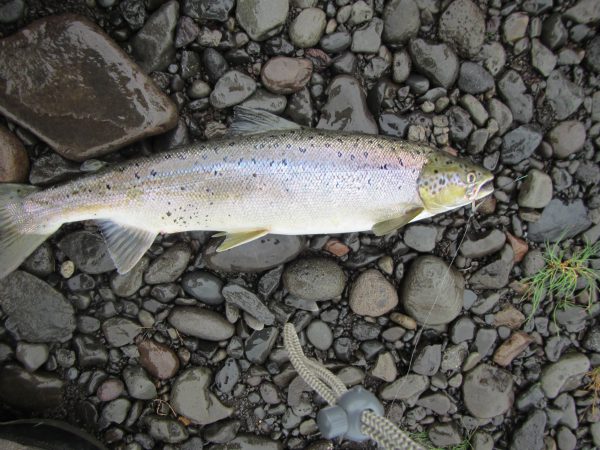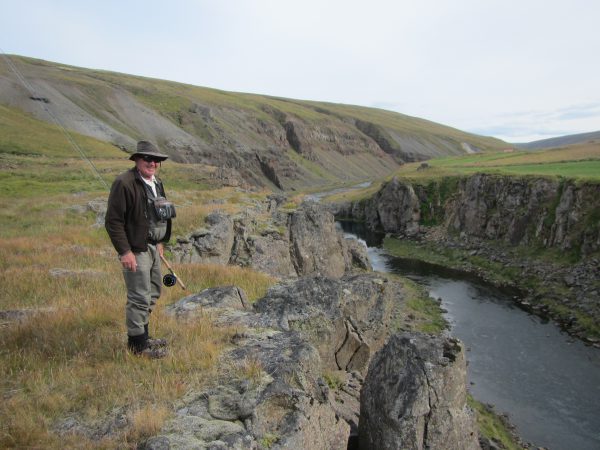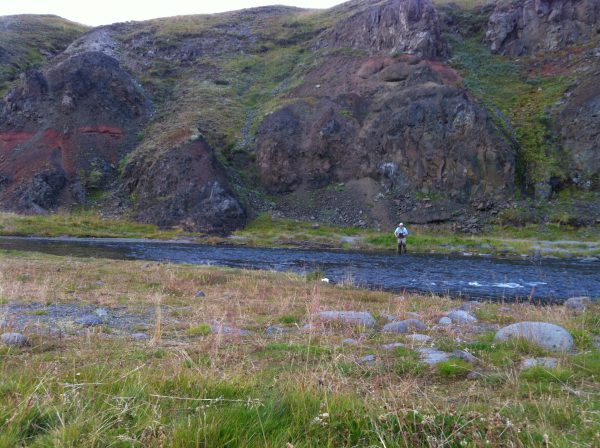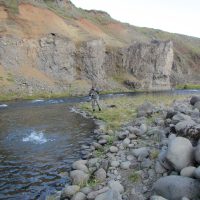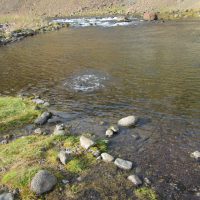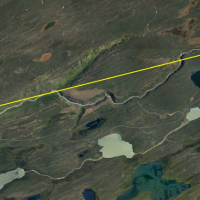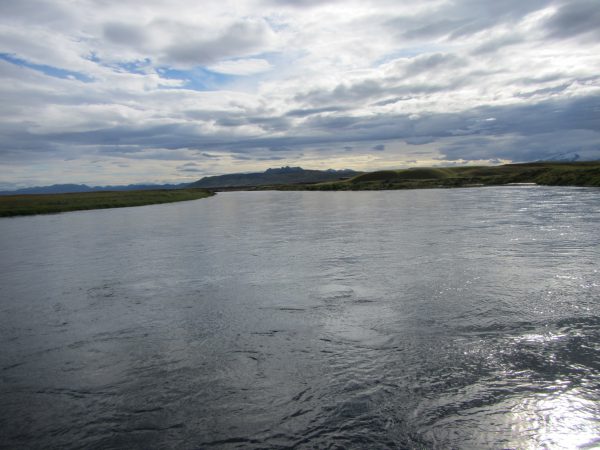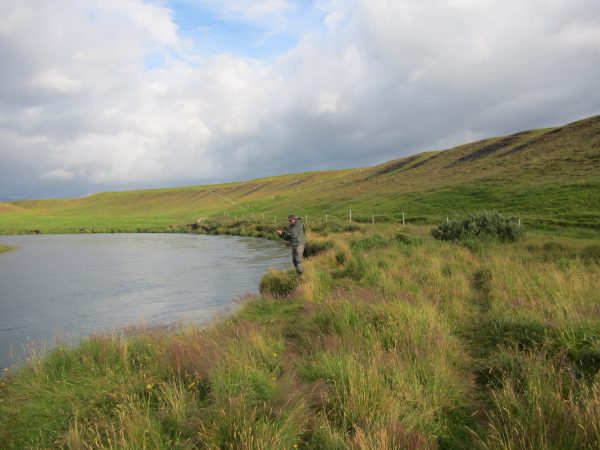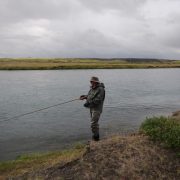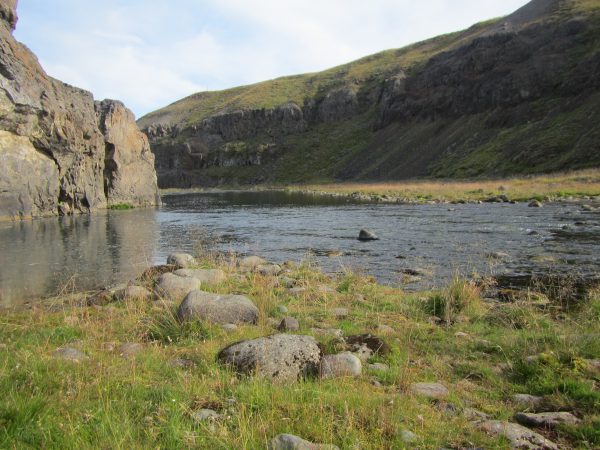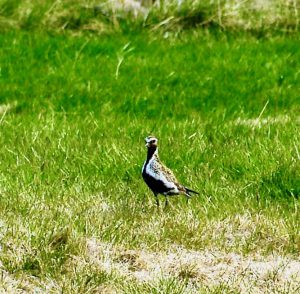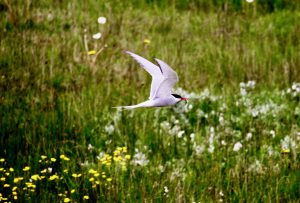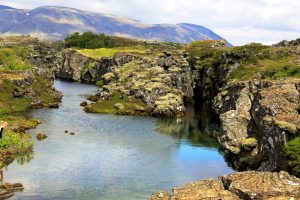Réttarfoss
In a previous post I covered this river – see below. The current post deals exclusively with the two uppermost fishing spots – i.e. the Réttarfoss pool and the Réttarstrengur run.
The crew for this trip was my fishing partner and friend Sibbi – https://everyjonahhasawhale.com/?p=1783 – and Hilmar Konráðsson, with whom I had not fished before – but I will gladly fish with again. Then there was my American friend and traveling companion Odell Mullis in the role of photographer. His job was the hardest – fingers freezing – electronics sluggish, and rain constantly splattering the lens.
The salmon in Hrútafjarðará can get up to Réttarfoss, but can’t jump that waterfall. Therefore, the pool below the waterfall invariably holds numerous fish at the tail end of the season. However, it is awkward to fish, and casting in the canyon can be problematic. The position taken by most anglers is close to the middle of the outflow from the pool. That is not an ideal position. You get too close to the fish to my liking, and you are practically on top of some of them. This violates two of my fly fishing tenets: no unnecessary wading and don’t get too close to the fish.
We were fishing there in late August ’19, and the conditions were challenging. Just a few degrees above freezing, and wind was barreling up the canyons from the north, and the blessed rain was there too, and there was a lot of both. The amount of water flowing was quite a bit over the average. No fun wading in those conditions.


By tiptoeing close to the black basaltic rocks to the position you see on the photograph above, we were in a relatively concealed position to cast over the outflow tract of the pool. However, the fly was not going to move across the water in a way we like it to do. After some rumination Sibbi says “let’s try a hitching tube here, and just strip it across the outflow.” This is why I love this guy – he is always ready to try something unconventional. The salmon loved this, too, and we had great fun for a while with multiple salmon striking the flies, and there were some takes and then some salmon landed. (It is called hitching when the fly is riding the surface and a V shaped disturbance on the surface forms – see video. https://www.youtube.com/watch?v=A0TYgn_oO2Q )
The current is usually sufficient to make this happen, but by stripping the fly we made it go faster than the current, thus making the V on the surface. This strategy saved the day for us and will certainly be tried again. This is a very good reminder not to get stuck in some routine. If your approach does not work, try something else. It really does not matter how you don’t catch fish – does it?
Réttarstrengur
After leaving the Réttarfoss pool the river flows over some rocks, and is shallow and spread out with no channel. At the rock formation – seen clearly in the third picture below – the river forms a channel, Réttarstrengur, that is pushed up against the west canyon wall. The salmon will be there from the run’s beginning, and can be found for 100 meters (more or less depending on the amount of water). There are always salmon there – you may not catch them, but they are there. We take great care not to get too close (no wading there), instead we use longer casts, and the fly must be delivered on the opposite side of the current for best results. Then you pull it into the current and now you mend. Small flies are our choice there. Take care to cast with quite a sharp angle not more than 45 degrees to insure the fly swings first over the fish – not the line then the fly. To do that you need longer casts as you do not want to wade or get close to the channel. Make an effort to keep the line and leader straight, that way the fly is fishing from the get-go. For the Icelandic crowd – see the excellent book Af Flugum, Löxum og Mönnum by Sigurður Héðinn a.k.a. Haugurinn page 72 on Smáflugur. Réttarstrengur is without doubt one of the premium runs in Icelandic salmon rivers.

You really should practice before your fishing trips, preferably with a casting instructor. I have witnessed multiple times anglers in expensive rivers with no cast at all. It is a mystery to me why anyone buys those costly permits, and shows up with no cast. Most anglers I come across in salmon rivers would do well to take some lessons. When you are riverside it is too late to learn how to cast.

This is how far away from the river’s edge we like to be. There is no sense in getting closer if we can cast over the run with a sharp angle from where we are at. By and large anglers wade too close and also too deep. If you get too close – the fish see you, and it is game over. If you wade too deep you lose height and your cast suffers.

Sibbi keeps his distance and is rewarded with a beautiful salmon.
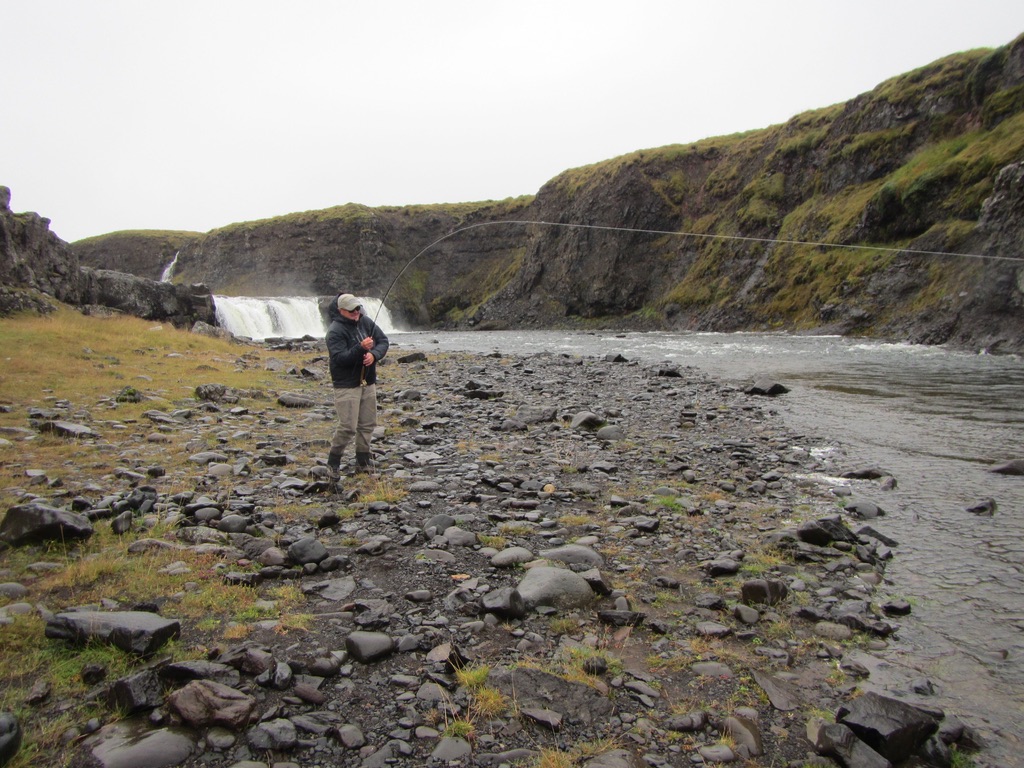
Subsequently released into the river.

Odell and Hilmar seeking shelter from the wind, cold and rain.

Here is a short video from Réttarstrengur.


